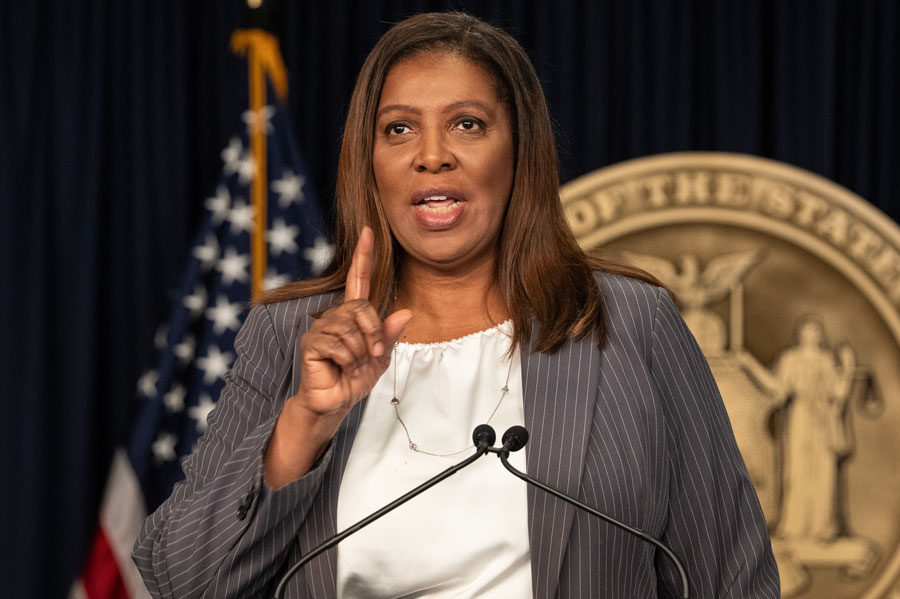
WASHINGTON, D.C. – A legal battle is heating up between more than 20 Democratic-led states and the federal government over a new Trump-era policy that could significantly restrict access to safety-net services for undocumented migrants. At the center of the controversy is a new federal rule requiring immigration-status verification for participation in federally funded programs such as Head Start, community health clinics, adult education, and mental health services.
In July 2025, the U.S. Department of Health and Human Services under the Trump administration issued a new federal rule expanding the enforcement of a 1996 immigration law. The rule requires immigration-status verification for access to federally funded safety-net programs such as Head Start, community health clinics, mental health services, and adult education. Previously, states had more flexibility in how these rules were applied, but under the new directive, all recipients must prove lawful presence to receive services — or risk losing federal funding.
The lawsuit, State of New York et al. v. United States Department of Justice et al., led by New York Attorney General Letitia James and joined by states including California, Massachusetts, and Illinois, argues the rule was imposed without following proper administrative procedures. The states claim the change threatens to dismantle critical public programs, disproportionately impacts vulnerable populations, and violates the Constitution’s Spending Clause by adding new conditions to longstanding federal grant agreements.
However, the broader implication of the policy is not just administrative – it’s strategic. The federal government, under this rule, is signaling that it will no longer fund services for undocumented immigrants and is instead telling states: if you want to provide these services, you’re welcome to – but you’ll need to foot the bill yourselves.
This marks a significant shift in how federal immigration enforcement intersects with local policy. Rather than directly banning sanctuary policies, the administration is applying financial pressure, effectively telling states that offer broad social safety nets to undocumented residents that they must “pay their own way.” The message is clear: if a state like New York or California wishes to operate as a sanctuary jurisdiction, it should not rely on federal dollars to support services that are not aligned with federal eligibility rules.
New York officials estimate the impact could be massive, warning of a potential $700 million shortfall in Head Start funding that could affect over 43,000 children across the state. Critics of the rule say this move undermines decades of community support structures, not only for undocumented residents but also for legal immigrants and even U.S. citizens who may lack immediate access to documentation.
Supporters of the rule, however, argue that it restores fiscal responsibility. They say it is unfair for federal taxpayers, especially those in states with stricter immigration policies, to subsidize states that actively defy federal immigration priorities. From this perspective, the policy doesn’t ban states from operating the way they want – it simply refuses to make the rest of the country pay for it.
The lawsuit argues that the administration’s reinterpretation of a 1996 immigration statute improperly expands its scope and was implemented without the required public comment process, violating the Administrative Procedure Act. Additionally, the states contend that imposing new eligibility rules on existing funding agreements is unconstitutional.
What this all boils down to is a fundamental debate over who should bear the cost of sanctuary policies. The federal government is drawing a fiscal line: states that want to offer more inclusive services are free to do so – as long as they use their own money. The legal challenge now underway will determine whether that stance is lawful, but politically, the message has already been delivered.
Top Questions & Answers About New York’s Lawsuit Over Migrant Aid Cuts
1. What is the new federal rule that New York is challenging?
The rule, issued by the U.S. Department of Health and Human Services in July 2025 under the Trump administration, requires immigration-status verification for people seeking access to federally funded programs like Head Start, community health centers, mental health services, and adult education.
2. What does New York argue in its lawsuit?
New York and over 20 other states argue that the rule was unlawfully implemented without proper public notice or comment, in violation of the Administrative Procedure Act, and that it unconstitutionally imposes new conditions on existing federal funding.
3. What’s the name of the lawsuit?
The case is titled State of New York et al. v. United States Department of Justice et al., filed July 21, 2025, in the Northern District of New York.
4. Why is immigration-status verification such a big deal for these programs?
Many of these services have historically been available regardless of immigration status or were handled with state discretion. The new rule mandates strict federal enforcement, potentially cutting off access for undocumented immigrants and even affecting some legal residents who lack immediate documentation.
5. Is the federal government banning services for undocumented immigrants?
Not directly. States and cities can still offer services to anyone — but they’ll have to do so without federal money if they don’t enforce the new immigration-status checks.
6. What impact could this have in New York?
New York officials warn of a potential $700 million loss in Head Start funding alone, affecting more than 43,000 children. Other programs could also face staffing cuts or closure.
7. Is this really about immigration, or is it about funding?
Both. While immigration is the flashpoint, the underlying issue is fiscal: the federal government is pushing states that want to offer broader access to pay for it themselves.
8. What is PRWORA and how does it factor in?
PRWORA (the Personal Responsibility and Work Opportunity Reconciliation Act of 1996) restricted certain federal benefits for undocumented immigrants. The new rule dramatically expands how that law is applied — and who is affected.
9. Who supports the federal rule?
Supporters say it restores accountability to federal spending and prevents states from using federal funds to support sanctuary-style policies that conflict with federal immigration enforcement priorities.
10. What happens next?
The lawsuit will proceed through the courts, where a judge will determine whether the rule was lawfully implemented and whether the federal government has the right to withhold funds over these new requirements.


